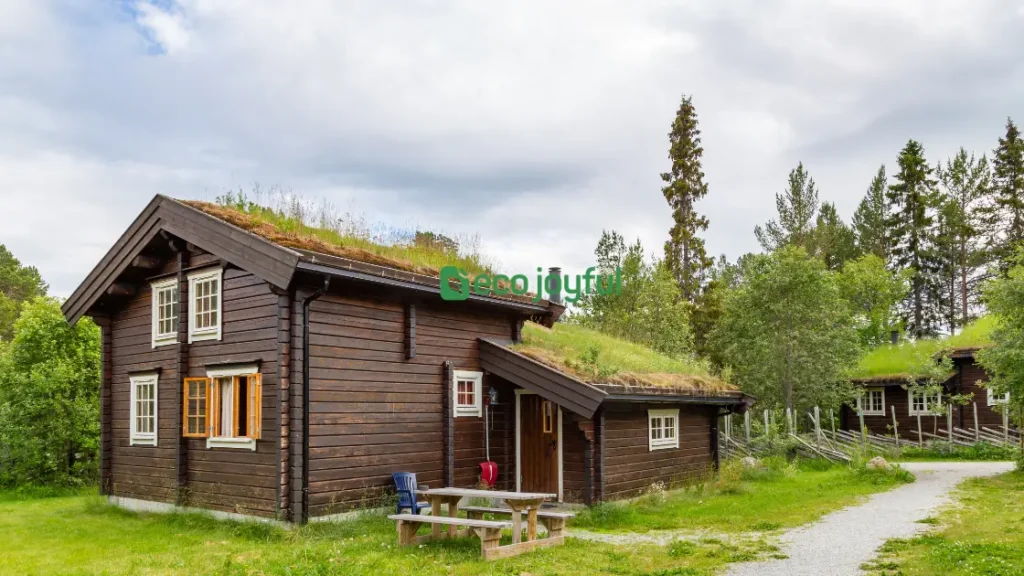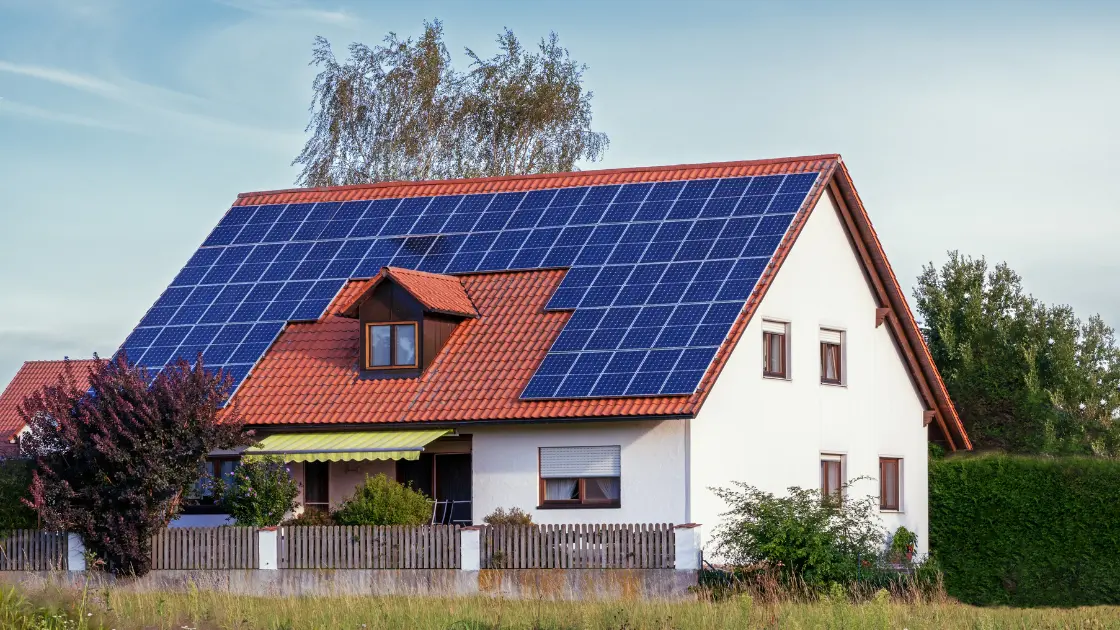A sustainable home is an environmentally friendly and energy-efficient dwelling that minimizes its impact on the planet. It is designed to reduce energy consumption, conserve natural resources, and promote a healthy living environment for both occupants and the surrounding ecosystem.
In today’s rapidly changing world, the importance of sustainable living has become more evident than ever before. With the deterioration of the environment and the depletion of natural resources, the need for sustainable homes has emerged as a solution.
A sustainable home is designed and built to minimize its carbon footprint, reduce energy consumption, and promote a healthier living environment.
From incorporating renewable energy sources like solar panels and geothermal heat pumps to using recycled and sustainable building materials, sustainable homes aim to create a harmonious balance between human comfort and environmental responsibility.
This comprehensive guide will delve into the key features, benefits, and strategies associated with sustainable homes, providing you with valuable insights and practical tips for creating a more sustainable living space.
Table of Contents

Understanding Sustainable Homes
A sustainable home is an environmentally friendly dwelling designed to minimize its environmental impact.
These homes incorporate energy-efficient features, utilize renewable resources, and aim to reduce waste and emissions. By adopting sustainable practices, homeowners can contribute to a greener future.
Definition Of A Sustainable Home
A sustainable home is an environmentally conscious dwelling designed to minimize its impact on the planet. It employs various energy-efficient and eco-friendly practices to reduce energy consumption and waste generation.
Sustainable homes focus on using renewable resources, reducing carbon emissions, and promoting a healthy living environment.
These homes utilize innovative technologies and effective design strategies that leverage nature’s resources to provide comfort while leaving a smaller ecological footprint.
Benefits Of Sustainable Homes
- Eco-Friendly: Sustainable homes help preserve the environment by reducing carbon emissions and minimizing waste. They incorporate features such as solar panels, rainwater harvesting systems, and efficient insulation to lower energy consumption and rely on renewable resources.
- Cost Savings: Investing in a sustainable home can lead to long-term cost savings. By utilizing energy-efficient appliances and systems, homeowners can significantly reduce their utility bills. Additionally, the use of renewable energy sources can help mitigate the impact of rising energy costs.
- Improved Indoor Air Quality: Sustainable homes prioritize the use of non-toxic materials and proper ventilation systems. This leads to improved indoor air quality, reducing the risk of respiratory issues and allergies for occupants.
- Enhanced Comfort: Sustainable homes are designed to provide optimal comfort for residents. They employ effective insulation, natural lighting, and passive cooling and heating techniques to maintain pleasant temperatures throughout the year, reducing the need for excessive use of heating or cooling systems.
- Increased Property Value: With a growing focus on sustainability, sustainable homes tend to have a higher resale value. Buyers appreciate the benefits associated with these homes, including energy efficiency, lower utility bills, and reduced environmental impact, making them an attractive investment option.

Key Elements Of A Sustainable Home
A sustainable home is designed and built with a focus on minimizing its impact on the environment and maximizing its energy efficiency.
It is a home that promotes a healthy and eco-friendly lifestyle for its occupants. In this article, we will delve into the key elements that make a home sustainable, including energy efficiency, water conservation, and waste reduction.
Energy Efficiency
One of the essential elements of a sustainable home is energy efficiency. Energy-efficient homes are designed to reduce the amount of energy they consume, which not only helps to protect the environment but also helps homeowners save on energy bills. There are various ways to improve energy efficiency in a home:
- Proper insulation: Insulating your home effectively can prevent heat loss during winter and reduce the need for excessive cooling during summer.
- Energy-efficient appliances: Using appliances that have a high energy efficiency rating can significantly reduce energy consumption.
- Efficient lighting: Replacing traditional incandescent bulbs with LED or compact fluorescent bulbs can save a substantial amount of energy.
Water Conservation
Another crucial aspect of a sustainable home is water conservation. Conserving water not only helps preserve this precious resource but also reduces water bills. Here are some ways you can conserve water in your home:
- Low-flow fixtures: Installing low-flow faucets and showerheads can significantly reduce water usage without compromising on functionality.
- Water-efficient appliances: Opting for water-efficient appliances like dishwashers and washing machines can also help in conserving water.
- Rainwater harvesting: Collecting rainwater can be a great way to reduce dependency on municipal water supply for outdoor use like gardening or car washing.
Waste Reduction
Waste reduction plays a vital role in creating a sustainable home. Reducing waste not only contributes to a cleaner environment but also helps conserve natural resources. Here are some waste reduction practices to incorporate in your sustainable home:
- Recycling: Set up a recycling system in your home and ensure that recyclable materials like paper, glass, plastic, and metal are separated and properly disposed of.
- Composting: Composting kitchen scraps and yard waste can significantly reduce the amount of organic waste sent to landfills and provide nutrient-rich soil for gardening.
- Minimalism: Adopting a minimalist lifestyle can help reduce the amount of waste generated by buying and discarding unnecessary items.
By incorporating these key elements of a sustainable home, you can not only contribute to a healthier and greener planet but also create a living space that promotes a sustainable and eco-friendly lifestyle for you and your family.
Building An Eco-friendly Haven
In this section, we will explore the various aspects of building an eco-friendly haven. Building a sustainable home goes beyond just being environmentally friendly – it also focuses on creating a space that harmonizes with nature while prioritizing energy efficiency and resource conservation.
By choosing sustainable materials, designing for energy efficiency, and implementing water conservation strategies, you can create a home that is not only eco-friendly but also comfortable and cost-effective.
Let’s delve deeper into these important considerations!
Choosing Sustainable Materials
When it comes to building an eco-friendly home, choosing sustainable materials is a crucial step. Sustainable materials are those that are sourced responsibly and have a minimal impact on the environment.
They can include recycled or reclaimed materials, such as reclaimed hardwood flooring or recycled glass countertops. Opting for sustainable materials also means selecting products with a lower carbon footprint, like bamboo or cork flooring, which are renewable resources that grow quickly.
Furthermore, using materials that are non-toxic and have low volatile organic compound (VOC) emissions helps to maintain good indoor air quality.
Designing For Energy Efficiency
Designing your home with energy efficiency in mind not only reduces your carbon footprint but also helps you save on energy bills. Consider incorporating passive design principles, such as proper insulation, strategic window placement for natural ventilation and daylight, and utilizing the sun’s orientation for heating and cooling.
Installing energy-efficient appliances and LED lighting can also significantly reduce energy consumption. Moreover, incorporating solar panels or other renewable energy sources can offset your energy usage and even allow you to sell excess energy back to the grid, making your home more sustainable and potentially generating some extra income.
Implementing Water Conservation Strategies
Water is a precious resource, and implementing water conservation strategies in your sustainable home is key. Start with fixtures and appliances that are water-efficient, such as low-flow showerheads and faucets, dual-flush toilets, and ENERGY STAR-rated washing machines and dishwashers.

Collecting rainwater and utilizing it for irrigation or even flushing toilets can help reduce dependency on municipal water supplies.
Additionally, landscaping with native plants or those that require less water can significantly decrease outdoor water usage. Implementing these water-saving strategies not only promotes sustainability but also contributes to conserving this vital resource.
Conclusion
To sum up, a sustainable home is not just an emerging trend but a responsible choice for a greener future. By incorporating eco-friendly materials, renewable energy sources, and efficient designs, these homes minimize environmental impact and promote greater energy efficiency.
Sustainable homes not only reduce carbon footprint but also contribute to healthier living conditions for occupants. Taking small steps towards sustainable living can ultimately make a significant difference in building a more sustainable and resilient world.






